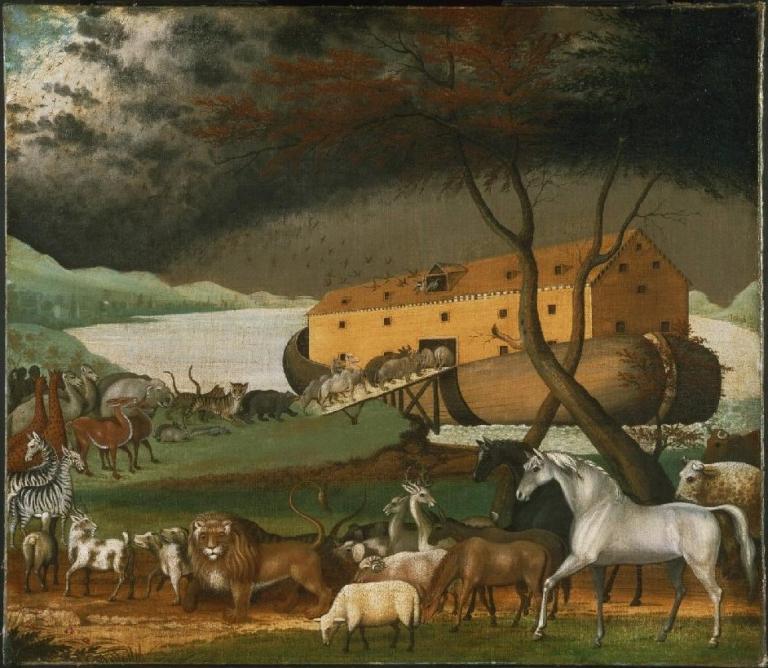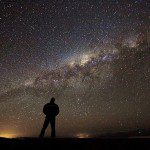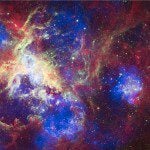
***
A new item has gone up on the website of the Interpreter Foundation:
***
Sigh. When, in the course of human events, it becomes necessary to call an individual or a group out for persistent and significant errors, a decent respect to the opinions of mankind requires that the reasons for that calling out be given. Mercifully, the Neville-Neville Land blog is doing almost all of the heavy lifting in that regard, so that I don’t need to. Here, for example, is one recent instance:
“Still more assertions without evidence from Jonathan Neville”
***
Some of you may have noticed my mentions here, from time to time, of several book manuscripts upon which I’ve been fitfully working. They are far, far more central to my ambitions than are blog entries and even occasional columns. I haven’t gotten much done on them over the past several months, but I hope to be able to concentrate on them a bit more in the not too distant future. (Basically, I retired in order to write. And, yes, to travel. But we’ve actually been traveling quite a bit more since my retirement than I would prefer. There is a specific and very mundane reason for this, but it has interfered with my ability to focus. Alright in the short term, but not congruent with my long-term plan.) I also have a lot of reading to do, much though not all of it directly or indirectly related to my writing projects.
As I noted in a blog entry the other day, I recently read Christian Smith’s Atheist Overreach: What Atheism Can’t Deliver (New York City: Oxford University Press, 2019). Here are two more passages from it that are not directly related to its central argument but that I marked while reading the book. (I cannot read anything, not even a novel, without a pencil in hand or without some other marking mechanism readily available.)
One of my most valued writing projects is a projected multi-volume argument for the rationality of theism, and specifically of Christian theism, and more specifically of the Latter-day Saint form of Christian theism. Among its principal “targets,” accordingly, is what might be termed the “naturalistic worldview.” It’s important for me, therefore, to be able to define that naturalistic worldview with at least some degree of clarity and precision. So I found these two passages from Christian Smith of relevant interest:
A naturalistic universe is one that consists of energy and matter and other natural entities, such as vacuums, operating in a closed system in time and space, in which no transcendent, supernatural, divine being or superhuman power exists as a creator, sustainer, guide, or judge. Such a universe has come to exist by chance — not by design or providence but by purposeless natural forces and processes. There is no inherent, ultimate meaning or purpose. Any meaning or purpose that exists for humans in a naturalistic universe is constructed by and for humans themselves. When the natural forces of entropy eventually extinguish the human race — if some natural or humanmade disaster does not do so sooner — there will be no memory or meaning, just as none existed before human consciousness evolved. (45-46)
Recall the features of a naturalistic universe. There is no transcendent natural law or moral force, no divinity, no ultimate spiritual meaning or destiny that transcends human invention during the blip of cosmic time that we humans have occupied. Reality consists of various conglomerations of infinitesimally small particles pulled together by physical forces and processes of emergence that are in a continual state of flux. Matter and energy — atoms, molecules, cells, organisms, light, heat, gravity, radiation — exist. Everything in existence is working itself out by natural forces that are neither designed nor intended nor morally weighted. Everything simply is. Some forces and processes generate certain outcomes; others generate others. Complex substances have slowly evolved. Life has very improbably evolved. Conscious and self-conscious human beings have even more improbably evolved. (55)
I add to this a pair of forthright statements from a very vocal advocate of the naturalistic worldview. In his 1994 book The Astonishing Hypothesis: The Scientific Search for the Soul, Sir Francis Crick (1916-2004; co-discoverer with James Watson of the double helix structure of DNA) declares his thorough-going naturalism and reductionism very clearly:
A person’s mental activities are entirely due to the behavior of nerve cells, glial cells, and the atoms, ions, and molecules that make them up and influence them.
The Astonishing Hypothesis is that ‘You,’ your joys and your sorrows, your memories and your ambitions, your sense of identity and free will, are in fact no more than the behaviour of a vast assembly of nerve cells and their associated molecules. As Lewis Carroll’s Alice might have phrased it: ‘You’re nothing but a pack of neurons.’
I’ve been holding my fire on this argument to a very considerable extent, as I want to save it for the books. But I don’t want to wait too long, so I may eventually revise my strategy.
***
We’ve just returned from the Utah Opera’s production of The Barber of Seville (1816), by Gioachino Rossini. It was opening night — and not only opening night but the first return to live productions after many months of COVID-compelled closure. So we were required at entry to provide proof of our identity and proof of vaccination, and to wear masks while inside and during the performance. (Almost everybody complied; some, alas, did not.) I approve of the requirement. One way to encourage vaccinations is to reward those who have been vaccinated. This deals with the “free rider” problem. And it helped us to feel pretty secure in the necessarily rather crowded conditions of the Capitol Theatre.
It was the broadest production of the Barber that I’ve ever seen. Slapstick at places, and with ludicrous costumes, including the phony music tutor “Don Alonso,” dressed as a California hippie from the late sixties, carrying a sitar (and attempting to play it like a guitar), and saying “namaste.” Also a pair of disco-dancing nuns and a seductive, chain-smoking housekeeper (changed from the elderly governess of more conventional productions) and a strange fixation on roosters, including a psychedelic dream filled with dancing chickens.
But it was amusing, and the audience loved it.












